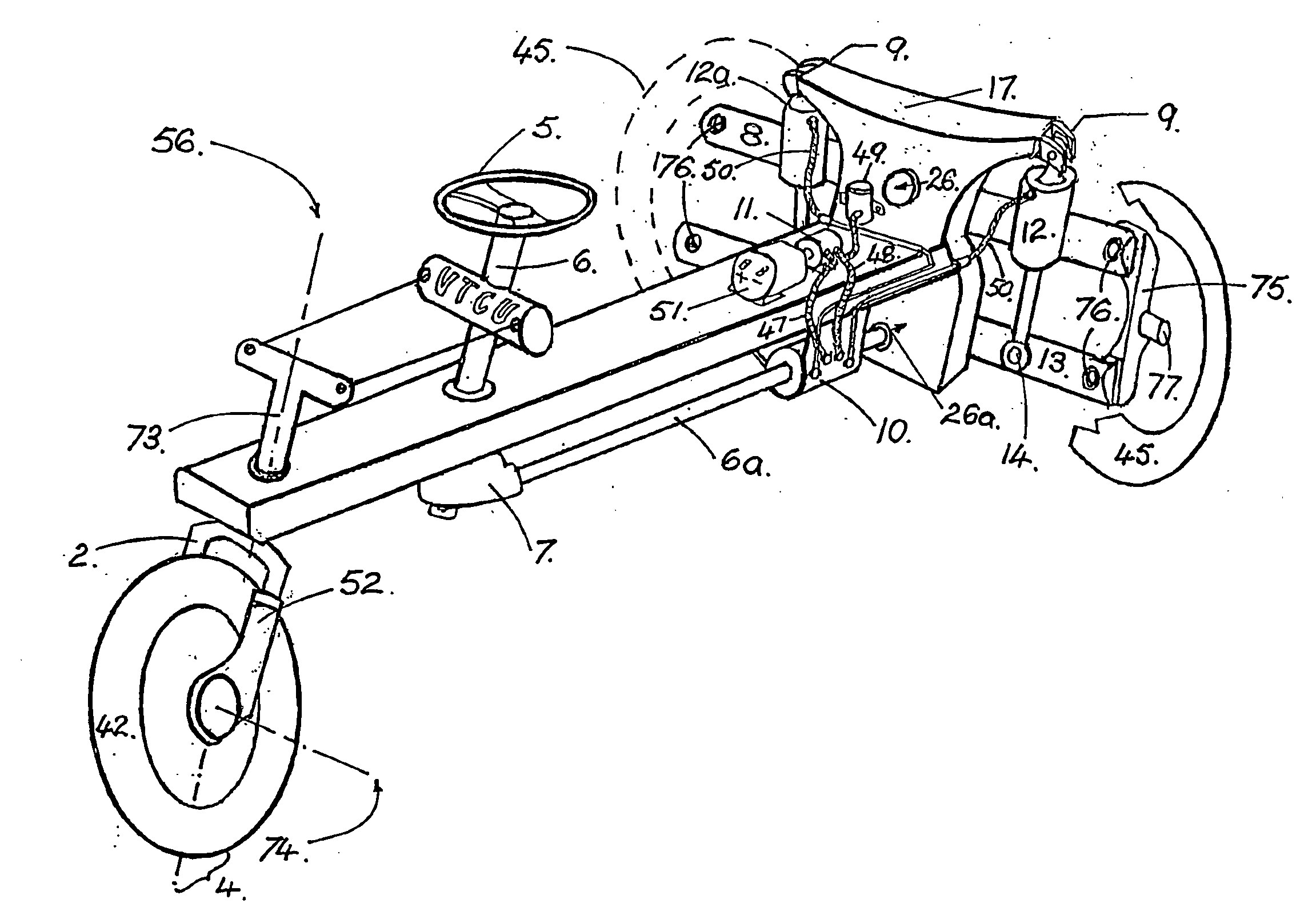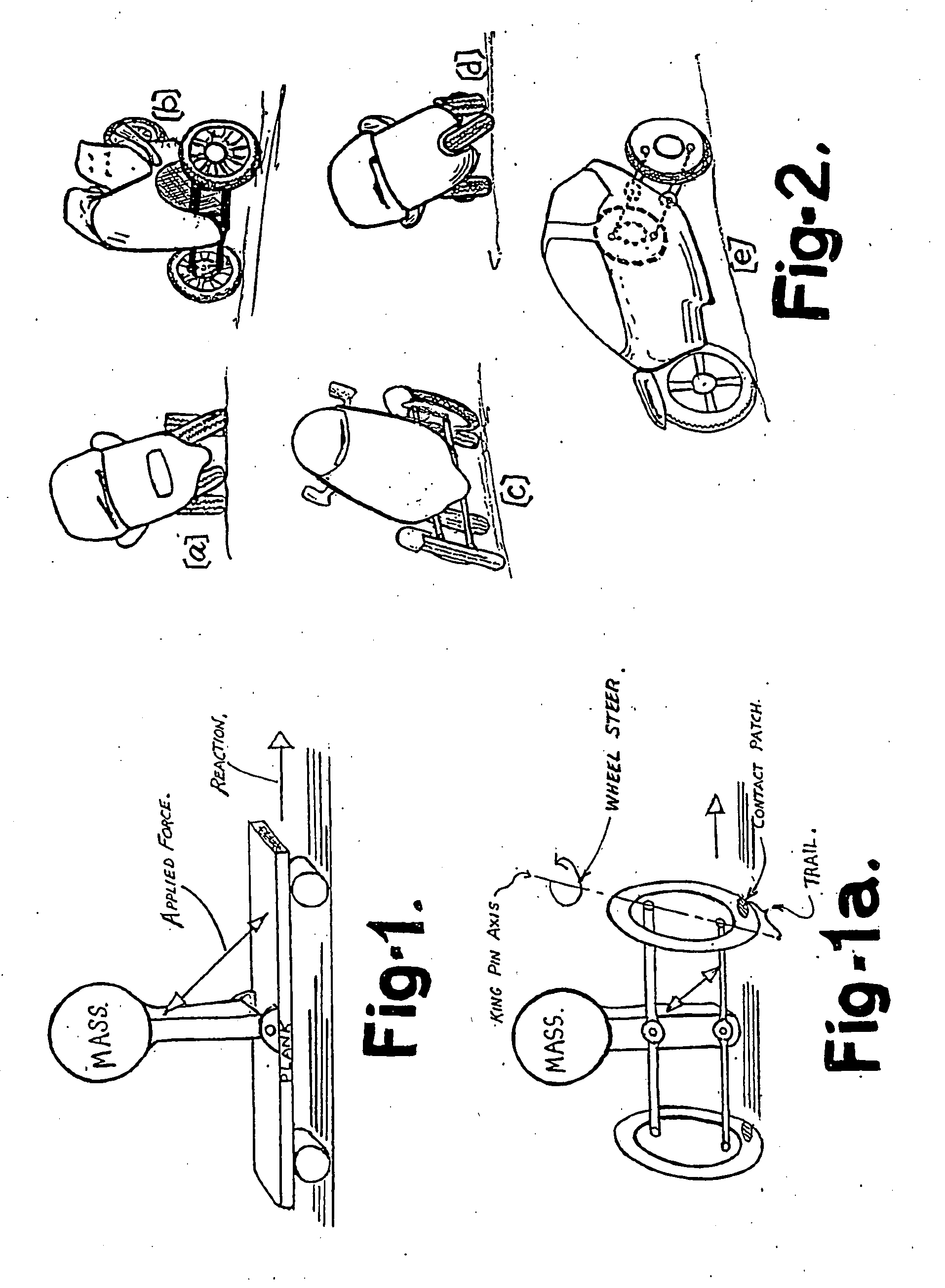Tilting Vehicle
a technology of tilting vehicle and driver input, which is applied in the direction of interconnection system, steering parts, and resilient suspensions, etc., can solve the problems of affecting the performance of the vehicle, unable to achieve mechanical connection between the driver input and the front wheel [via a torque sensing spring in the sensor), and requiring inferior feedback methods
- Summary
- Abstract
- Description
- Claims
- Application Information
AI Technical Summary
Benefits of technology
Problems solved by technology
Method used
Image
Examples
Embodiment Construction
[0037]I will now describe the best way of performing my invention known to me when the vehicle has two front wheels and is operating above approximately 10 mph [16 kph]. The descriptions given include power assist tilt elements which are not absolutely necessary. The necessity depends on the vehicle mass, vehicle operating speed range, and the transmission ratio between control and tilt action. A vehicle with no power assist will be similar to the vehicle about to be described, with the power assist components removed. In FIG. [3] is shown a tilting vehicle of type [b] with a castoring element, in this case two front wheels [42,42a] [represented by dotted lines], that rotate on axles [39] [one visible] when the vehicle is under way. The axles attach to carriers [52,52a] sliding on parallel bars formed within the steer pivot suspension structures [2,2a], to allow suspension movement [as will be described in more detail later]. The wheels are arranged on either side of the centre of g...
PUM
 Login to View More
Login to View More Abstract
Description
Claims
Application Information
 Login to View More
Login to View More - R&D
- Intellectual Property
- Life Sciences
- Materials
- Tech Scout
- Unparalleled Data Quality
- Higher Quality Content
- 60% Fewer Hallucinations
Browse by: Latest US Patents, China's latest patents, Technical Efficacy Thesaurus, Application Domain, Technology Topic, Popular Technical Reports.
© 2025 PatSnap. All rights reserved.Legal|Privacy policy|Modern Slavery Act Transparency Statement|Sitemap|About US| Contact US: help@patsnap.com



